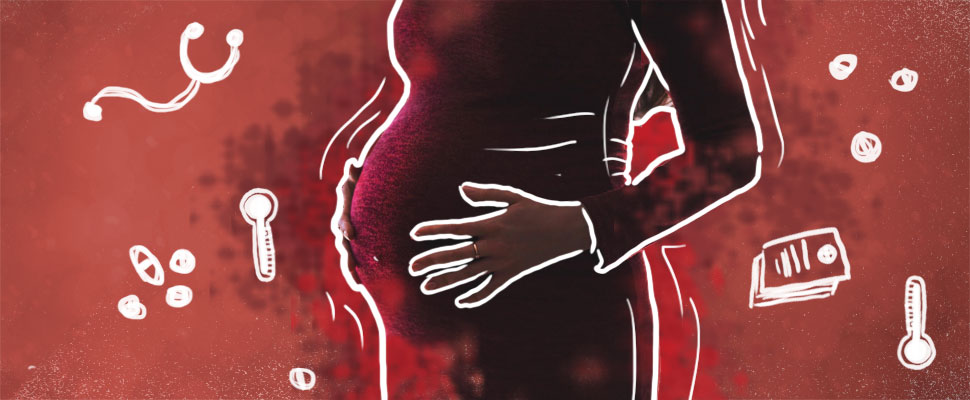Watch out! Preeclampsia could endanger your life and your baby’s
Do you know what preeclampsia is? Discover it here

In 2018, Beyoncé revealed to the world what she suffered during her second pregnancy, from which Rumi and Sir Carter were born. In an interview with Vogue, Queen B declared that she weighed 218 pounds when she gave birth. "I was swollen from toxemia and I had been in bed rest for more than a month. My health and the health of my babies were in danger, so I had an emergency caesarean section. We spent many weeks in the NICU."
Leer en español: ¡Cuidado! La preeclampsia podría poner en peligro tu vida y la de tu bebé
But what is toxemia? This is the name that is also known as preeclampsia, a complication suffered only by women during pregnancy, after the 20th week. If it is not treated at the right time, it can put the baby's life at risk. It is brewing in the womb as the life of the mother, as was the case of the singer of Run the World.
In fact, according to the World Health Organization (WHO), this condition is one of the main causes of maternal deaths along with serious hemorrhages and infections, among others. Preeclampsia is defined as a disease characterized by high blood pressure or gestational hypertension, and "excess protein in the urine" or proteinuria, as explained by Mayo Clinic. The latter can be a sign of some problem in the liver.
You may be interested in reading: Why your baby cries and how to calm him down?
What are the symptoms?
"While high blood pressure during pregnancy does not necessarily indicate pre-eclampsia, it can be a sign of another problem, Preeclampsia affects at least 5-8% of pregnancies," as The American Pregnancy Association mentions. According to the same association, The Preeclampsia Foundation and Mayo Clinic, these are some of the symptoms of toxemia, in addition to hypertension and proteinuria:
- Swelling due to fluid retention in the feet, hands or face
- Sudden weight gain
- Fatigue
- Nausea or vomiting
- Severe headache, sensitivity to light, blurred vision or temporary loss of this
- "Pain in the upper part of the abdomen, usually below the ribs and on the right side
- Lower levels of platelets in the blood (thrombocytopenia)
- Impaired hepatic function, "according to Mayo Clinic.
- Difficulty breathing
- Urinate little or infrequently
According to Mayo Clinic, "contact your doctor immediately if you experience blurred vision, severe headaches, abdominal pain and/or urine infrequently."
Risks of preeclampsia
Many times the signs or symptoms of preeclampsia are not visible or are not identified as much more serious by the mother, as they are associated with normal pregnancy symptoms.
According to Eunice Kennedy Shriver National Institute of Child Health and Human Development (NICHD), "in 75% of cases, preeclampsia is mild, but a woman can go from having a mild preeclampsia to a severe form, or eclampsia. complete even in a few days, especially if it is not treated."
In this way, when preeclampsia is not treated, the consequences can be fatal. Not only affects the baby to the extent that it can cause a detachment of the placenta, which can lead to premature birth and even death of the baby. It also causes problems and even faults in the organs of the mother, as in "the kidneys, the liver, the brain", among others.
Also, as the same institute explains, it can also affect your blood system. "In severe cases, preeclampsia can turn IGNORE INTO eclampsia and cause convulsions. The convulsions in eclampsia cause the woman to lose consciousness, fall to the floor and twist uncontrollably. If untreated, this can lead to the death of the patient. mother and/or fetus. "
What to do?
The American Pregnancy Association advises going to prenatal check-ups regularly to prevent any complications. During these check-ups, you will be able to receive adequate medical attention. You will have to perform several tests, such as blood and urine tests, fetal ultrasound or biophysical profile, according to Mayo Clinic.
The latter is a test to check the baby's health, which measures "breathing, muscle tone, movement of the baby, and volume of amniotic fluid in the uterus." In this sense, it is necessary that the mother and baby are constantly checked to prevent any problem.
According to the NICHD, "if preeclampsia is mild, it may be possible to wait to deliver the baby." To avoid additional complications, the health care provider may tell the mother to rest in bed. However, if this is serious, the doctor could give medication to control any complication, intern the mother, to induce an emergency delivery.
LatinAmerican Post | Diana Rojas Leal
Translated from: '¡Cuidado! La preeclampsia podría poner en peligro tu vida y la de tu bebé'
Listen to this article
Your browser does not support the audio tag.





